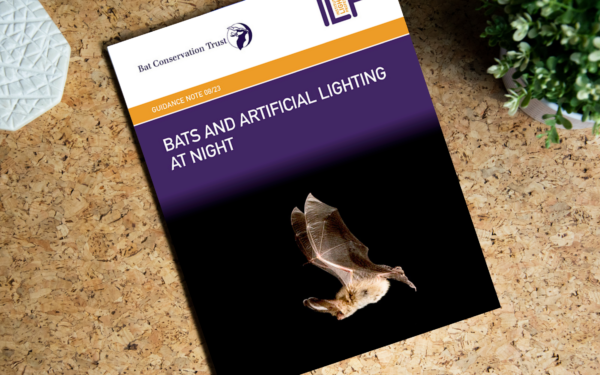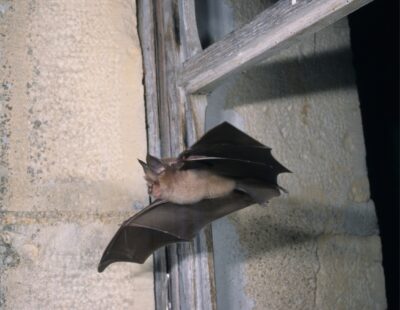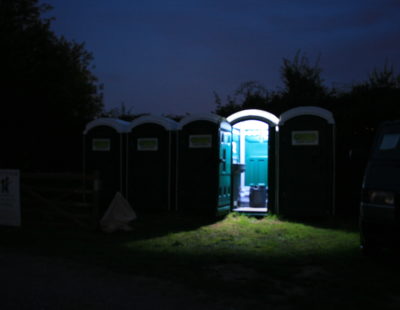Motion sensors are a key feature of some solar lights, enhancing their functionality and optimising energy usage. Here at Solareye, we understand the importance of reliable solar lighting, so we created this comprehensive guide to help shed light on the topic.
In this blog post, we will explore why some solar lights have motion sensors, how they work, and how to optimise the performance of your motion sensors.
How do motion sensors work?
Motion sensors are triggered by movement in front of a sensor. When this happens the light illuminates, a timer is then started and when motion is no longer detected the light dims or switches off entirely.
There are various technologies used to detect movement and trigger the illumination process. Here’s an overview of the different types of sensors that can be used in solar lights:
- – Infrared (IR) sensors:
The most common type, IR sensors detect heat signatures emitted by living beings. When a warm body enters the sensor’s range, it detects the change in heat patterns and activates the light. - – Microwave sensors:
These sensors emit continuous microwaves and measure the reflection pattern. Any movement within the detection zone alters the reflection, causing the light to switch on. Microwave sensors are highly sensitive and can detect motion through walls and other obstacles. - – Hybrid sensors:
Combining both infrared and microwave technologies, hybrid sensors offer enhanced accuracy and reliability. They reduce the occurrence of false alarms by cross validating the signals from both sensor types.
Why some solar lights have motion sensors
Motion sensors serve an important purpose in solar lights to enhance their efficiency and effectiveness. Detecting movement and provide light exactly when its needed helps to minimise the use of power and prolonging the life of the battery, as well as minimise the light’s impact on the local environment.
Energy conservation
Motion sensors ensure that solar lights are only activated when needed. By detecting movement within their range, they switch on the lights, conserving energy during periods of inactivity. This smart feature allows solar lights to operate for extended periods without requiring frequent recharging. Our Solareye80 ground lights and Solareye Bollard Light also feature a photo sensor which automatically switches the light on at dusk and off at dawn, meaning that the lights are only illuminated when they’re needed, and no energy is wasted.
Minimal evironmental impact
Depending on where your solar lights are placed, they could impact the local environment and wildlife through light pollution which disturbs the natural cycles of nocturnal animals such as bats. Motion sensors can be used as a part of a variable lighting regime to reduce or turn off lighting completely when it’s not needed, to help minimise the impact of artificial light at night on nocturnal animals.
Learn more about making lighting bat friendly >
Security enhancement
Solar lights equipped with motion sensors act as an effective security measure. When someone approaches your property, the lights instantly turn on, deterring potential intruders and providing a sense of safety. Motion-activated lights also make it easier for homeowners to identify visitors and navigate outdoor areas during the night. Solar powered bollard lights equipped with motion sensors are therefore a popular choice for residential developments, with the added benefit that they bring visual interest to outdoor spaces and create a welcoming and visually appealing aesthetic for residents and visitors to enjoy.
Convenience
Motion sensors on solar lights can of course also make things more convenient by activating lights for you as and when you need them to be on. Our Solareye Roof Lights are motion activated to help provide a hygienic and hands-free lighting solution to illuminating small spaces when needed. They are the perfect lighting solution for portable toilets helping to improve their safety and hygiene.
Learn more about solar lighting for portable toilets >
Optimise the performance of your motion sensor
Despite their advantages, motion sensors on solar lights can sometimes encounter issues. This will of course depend on the placement of your solar lights but also the quality of the components in your lighting. With Solareye, you can be assured that battery life and dust getting in the way won’t affect the functionality of your lights.
This is because our lights are IP68 (or higher) certified and have long life LFP batteries, but this isn’t the case for all solar lights. Here are some common reasons why they may not function as expected:
- – Obstructions: vegetation or dust may obstruct the sensor’s detection range. This issue can be minimised by cleaning the sensors and ensuring they have a clear line of sight.
- – Insufficient sunlight: Solar lights rely on sunlight to charge their batteries. Insufficient exposure to sunlight due to shading can result in weak battery performance, leading to motion sensor issues. This is why it is important to carefully consider the location of your solar powered lighting to ensure you are optimising the amount of light reaching the solar panel in all seasons of the year.
- – Battery issues: aging or defective batteries may cause the motion sensors to behave erratically or stop working altogether. Ensure your solar lights are running on high-quality long life batteries such as those used in Solareye80 ground lights, Solareye Roof Light and Solareye Bollard Light.
Do you need to replace the motion sensors?
Solareye products, such as the Solareye Roof Light, come with reliable motion sensors and light sensitive functionality. It is therefore very unlikely these sensors will ever need to be replaced so it’s always worth doing some troubleshooting first to find out why your solar lights aren’t activated by movement.
If your motion sensors are not functioning correctly, there are a few steps you can take before considering a replacement:
- – Check the specifications: ensure the sensor’s sensitivity, range, and duration settings are appropriate for the amount of motion that you want your solar lights to detect.
- – Clean the sensors: dust, dirt, or debris can interfere with the sensor’s performance. Regularly clean the sensors with a soft cloth to remove any potential obstructions. Solareye lights are IP69 certified which makes them dust proof and capable of withstanding high temperature, high pressure water and steam. This means dust and dirt are not a concern with Solareye lighting,
- – Test the batteries: weak or depleted batteries can affect the motion sensor’s functionality. Solareye lights have an in-built long life (8+ years) LFP battery that doesn’t require changing so you can rely on our lights and sensors to not fail you when you need them.
- – Verify positioning: ensure the solar lights are installed at the correct height and angle. Improper placement can limit the motion sensor’s effectiveness.
The importance of having reliable motion detection in solar lights
Whether you’re lighting a pathway, small indoor area or just trying to increase efficiency, motion sensors can really come in handy for your solar lights. They pose numerous other benefits such as convenience, hygiene, and security, which also increases the number of applications for your solar lights.
Our range of reliable solar lights feature both motion sensors and light sensitivity functionality so you can rely on Solareye products to illuminate when you need them too. Have a look at Solareye Roof Light for hygienic and hands-free illumination of portable toilets, storage units, bike shelters and domestic sheds and Solareye Bollard Light to guide people safely around your outside spaces. Alternatively, get in touch today to find out how we can help you!





